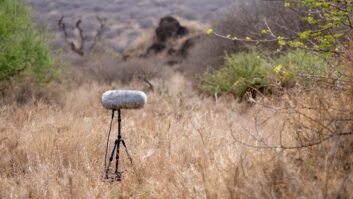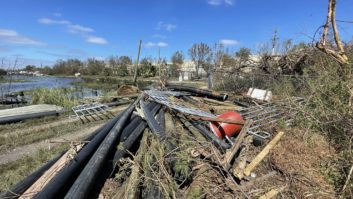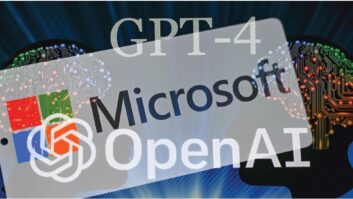

Fig. 1: Newly installed foam panels deaden sound in a studio. Fig. 2: Foam panels deteriorate. Depending on their age, they may also pose a fire hazard. Fig. 1 shows newly installed sound deadening foam squares, neatly applied to a studio wall. Fig. 2 shows the result of years of smoke, abrasion and sunlight — a rotting mess.
Bobby Gray, market chief for Salem Media Little Rock, reminds us that a studio full of deteriorating foam not may only be ugly, it may be out of code.
These photos are not from Bobby’s facility, but he writes that older 1980s-style foam has a vertical burn rate that makes it illegal to install in a large number of cities. If the stuff is going bad, it might be time to consider making it all go away. There are better, prettier methods of deadening a studio these days than powdered, aging, flammable foam.
This discussion is prompted by a picture we ran a few months ago, asking what you do when mounting foam around studio light switches or thermostats in a studio. When the switch plate is right next to the foam, constant rubbing is unavoidable but only hastens the disintegration process.
Bobby’s go-to solution is to bring the switchbox forward into the room, allowing the switch face to be raised above the surface of the foam. In some cases, Bobby has had to change to a quad-style electrical box.

Fig. 3: Low-profile foam reduces disintegration problems. At one facility a few years ago, the budget allowed Bobby to hire a local cabinetmaker to build a small oak cover for the new switch and quad box. The cover was about 2 inches deep and 10 inches by 10 inches square. The foam was cut back to accommodate the oak box; its addition really beautified the studio. The large 10-by-10 box kept fingers or hands from the foam edges — either on the switch itself or on the switch box.
Fig. 3 shows a deadening foam product with a low profile. The small ridges are less likely to get pulled or broken off, reducing the “rotting” problem.

Fig. 4: Cut the foam away from light switches or thermostats to reduce damage from hands. If you don’t have much of a budget, cut the foam away from the light switch or thermostat, as seen in Fig. 4. This shouldn’t disrupt the sound deadening quality of the room and, like the 10-by-10 box, will keep hands and fingers from the foam edges.
***
It’s satisfying to hit a topic that really resonates with readers of the Workbench column.
Our phasor crank maintenance discussion with engineering consultant R. Morgan Burrow, Jr., PE, in the March 16 issue was one. Based on your comments, I’ve asked Morgan to prepare a more thorough general directional AM phasor maintenance list that will appear here shortly.
Morgan’s primary warning: Before making any adjustment to a directional, confirm the integrity of the sampling system. This includes the antenna monitor. Morgan recently experienced two separate antenna monitors that “went south” and had to go back to Potomac for repair and recalibration before phasor work could begin.
In addition to the antenna monitor, check each each component of the sampling system. The electrical line length of the sample lines should be checked for equal length and compared to the original measurements when the lines were installed. Sampling toroids or sample loops must be inspected for damage. This includes the electrical connection to the sample line, as well as stable mounting. If the sampling system is compromised, you will compromise the integrity of the directional antenna.
***
Wolfram Engineering principal and frequent Workbench contributor Greg Muir found a link to an interesting company that supplies a variety of items to convert between various communications protocols. The site is www.usconverters.com.
Of particular note is an RS-232 serial-to-Ethernet converter. It might be a good answer if you have older hardware that possesses only a serial port but needs to connect to a LAN. Click on the products tab on the US Converters site for a listing of products.
Contribute to Workbench. You’ll help your fellow engineers and qualify for SBE recertification credit. Send Workbench tips to [email protected]. Fax to (603) 472-4944.
Author John Bisset has spent 46 years in the broadcasting industry and is still learning. He handles West Coast sales for the Telos Alliance. He is SBE certified and a past recipient of the SBE’s Educator of the Year Award.












